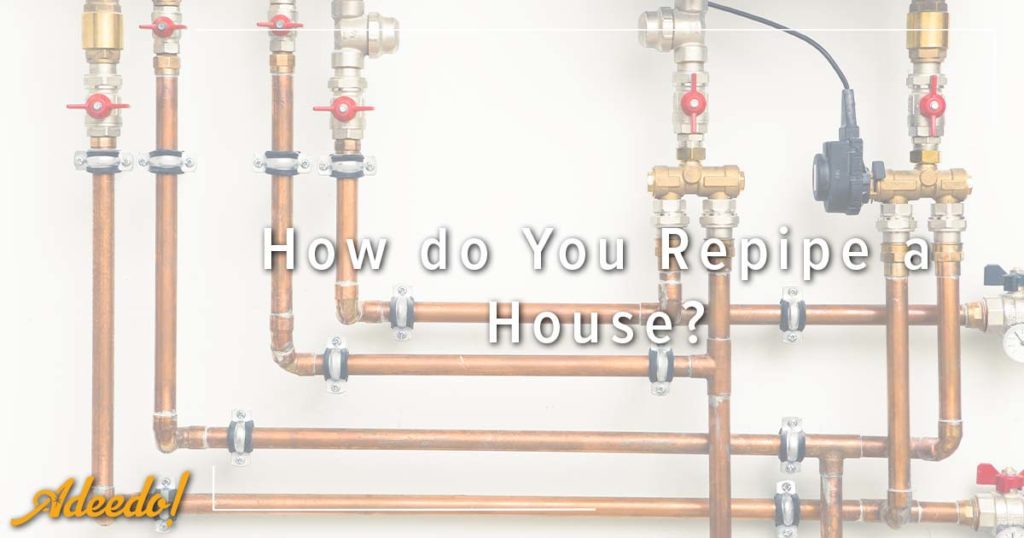If you have an older home, are doing a remodel, or dealing with ongoing plumbing issues, it may be time to repipe your home. This is an extensive project, but once it’s finished, you can get decades out of the investment.
Here’s what you need to know about repiping a home, signs you should invest in new plumbing, and what you can expect from the process.
What Does It Mean to Repipe a Home?
Repiping a home involves replacing the old plumbing system with a new plumbing system. This is a fully repiping, but some homeowners elect to have a partial repiping or replace pipes as problems arise.

When Would a Homeowner Need to Repipe a Home?
Repiping a home is a major undertaking and significant investment. It’s important to repipe your home when it’s the appropriate time to get the most out of your time, money, and effort.
Your Home Has Lead Pipes or Galvanized Steel Pipes
Older homes often have lead or galvanized steel pipes, depending on how old they are. In homes over 100 years old, lead pipes are common. Though they may have been replaced at some point, it’s important to check. Lead can leach into the water from the pipes and poses a health risk.
No Matter How Many Times You Fix Your Pipes, They’re Still Broken
If you’re always fixing problems with your plumbing, it may be a better investment to repipe. A new system can eliminate recurrent issues and spares you the constant expense of repairs, which can really add up over time.
You’re Remodeling Your Home
If you’re adding a bathroom or kitchen, or changing other plumbing fixtures in your home, this is a good time to repipe. It’s not only easier and cheaper to put in an entirely new plumbing system instead of meeting the old and new systems, but it will save you a major remodel when the old system ages and causes problems.
Before You Start – Get an Inspection and Estimate
Before you can repipe, you’ll need an inspection and estimate for the work. It’s good to get multiple plumbing companies to provide estimates to choose the best offer. This is also an opportunity to decide if you’re better off doing repairs, partially repiping, or fully repiping your home.
What to Expect During the Repipe Process
Repiping a home is an extensive project that involves replacing hot and cold pipes, and possibly additional pipes like wastewater drainage pipes.
Preparations
As mentioned, repiping is a huge renovation. You will need to cover your furniture and possessions to prevent water damage. The water will be shut off while the repiping is done, so you won’t have to use of your shower, sinks, and more. If necessary, speak to the plumber about the time frames to minimize your disruption.

Plumbers Need Access
Plumbers will need to access the pipes behind the walls. This involves cutting into the drywall, and after the new pipes are installed, the drywall will be patched and repainted. This may be necessary in every room in the house, so be sure to prepare accordingly.
How Long Does the Process Take?
Depending on the size of your home, repiping can take from between two or three days to a week. It may seem long, but you won’t be without water service for the entire time. You will have access to your old system while the new system is under construction, and you’ll only be without water while the plumber is changing over the systems.

Permitting
If you elect to fully repipe, your plumber will need a work permit. Permitting needs to be done after the initial work.
Inspection and Finishing
Finally, your new piping system will need to be inspected. Once the inspector signs off on the permit, the plumber can patch and repaint the drywall to restore it to its original state.


